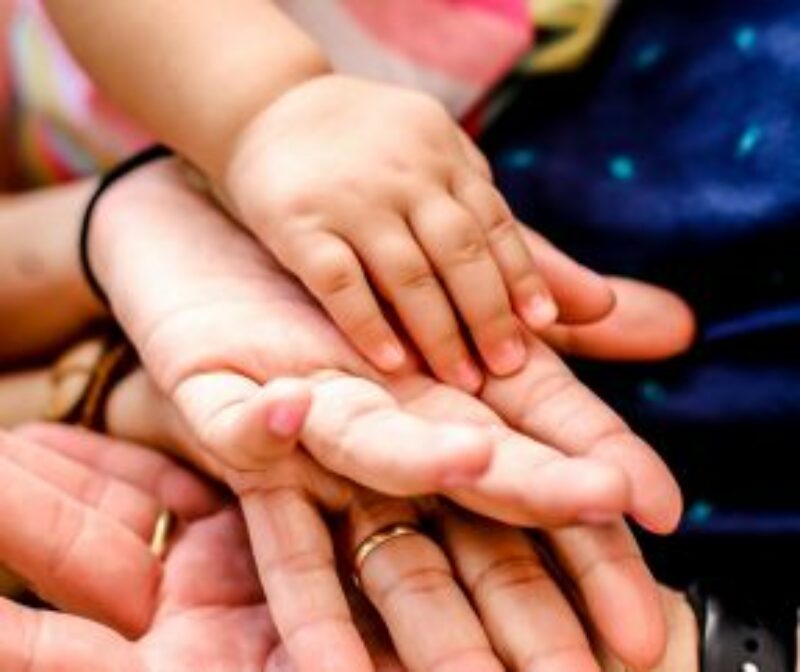This is Part 1 of a 3-part series.
What makes love, real love?
Relationships can be healing and life-giving and also damaging and heart-breaking. In my clinical work and academic research, I explore why we desperately need relationships and how loving relationships affect us. As part of this, I have identified six qualities that enable us to live in mutually beneficial loving relationships (whether as parents or in romantic or platonic relationships). These are: Proximal Responsiveness, Sensitivity, Repair, Differentiation, Cooperation, and Encouragement. In this 3-part series, I will explain these qualities and offer insights to help you better navigate your relationships.
One of the greatest keys to navigating the real ups and downs, the suffering and the joys of life is love. My journey of trying to understand “what makes love, real love?” began several years ago (although I didn’t know I was exploring that question at the time). In 2015, I worked in Germany with a nonprofit organization to provide humanitarian aid to displaced individuals and families from Syria, Afghanistan, Eritrea, and Gambia. While serving alongside these individuals, I was profoundly moved by the resilience of many of the families I encountered despite the unimaginable hardships and losses—yes, and trauma—they faced. What stood out was that those who demonstrated such remarkable resilience seemed to have positive or life-giving (dare I say loving) relational support from family members, friends, and spiritual communities. This observation left a lasting impression on me and shaped my desire to understand the role of loving relationships in fostering resilience, purpose, and joy. This interest led me to Fuller Theological Seminary’s School of Psychology, where I’m pursuing a Ph.D..
Why Do We Need Relationships?
From the moment we take our first breaths, we are not only embedded within but also deeply and profoundly reliant on our relationships with others. We need people to feed, clean, and calm us when we are emotionally upset. This reality continues from infancy through toddlerhood and into adolescence, and to no surprise, our need for others does not end when we reach adulthood but continues until we die. In Dr. Daniel J. Siegel’s book, IntraConnected he explains how neighboring trees’ grow to form a complex and interconnected root system that synergizes, allowing them to function as an integrated system. The purpose of this root system is to provide mutual support to one another, with trees able to detect the distress signals of other trees and send them nutrients and water to support them in their recovery. Dr. Siegel uses this metaphor to emphasize that just as trees are interconnected and supportive of each other, humans are also profoundly connected, and we need one another to survive.
What Can Relationships Offer Us?
Before I dive into answering this question, I want to note that while we need relationships, not all relationships are life-giving for us. To use Dr. Siegel’s tree metaphor, the reality is that while I might be a tree signaling I am in distress, what others might be offering me might be the exact opposite of nutrients and water—more like asbestos and lead (for those that are not tree people – poison!).
From my clinical work, I know that while relationships can be healing and life-giving, they can also be damaging and heartbreaking. While I do not have the time to explore the reality of hurtful relationships in this blog post, I do want to honor this reality while also briefly noting that, thankfully, being hurt by formative relationships does not equate to being doomed for the rest of your life. There is always the opportunity for repair, which I’ll discuss more in my second blog post.
Transitioning back to the question: What do “loving” relationships offer us? A whole, whole lot!
I am going to get into the research weeds a bit here, but I believe it is essential to understand how crucial our relationships are to our daily lives.
Research shows that people who live in “loving” relationships can better emotionally regulate, meaning we can better manage stressful emotions such as anxiety, sadness, or anger. Why are people in loving relationships able to do this better? Because we need others to do it! The technical term for this is co-regulation. In other words, our ability to come out of the highs of anxiety or the lows of depression is closely tied to our being embedded in a “root system” that sends us emotional nutrients (e.g., by being a calming force amidst the ups and downs of life).
Loving relationships also offer us greater resilience, self-esteem, purpose, and creativity as we gain a sense of safety and security from others.
The benefits, however, don’t end there. When deeply embedded in loving relationships, we are more likely to be open to new experiences and people who are different from us (something we desperately need at this time!). We are more able to be empathetic and take others’ perspectives, which in turn leads to healthier conflict resolution with others, higher intimacy and trust, and more stable and long-term relationships.
And if that’s not enough, there are also physiological benefits to being embedded in a “loving” relationship. We have lower stress hormones (i.e., cortisol), better immune functioning, lower blood pressure and heart rate variability, and improved sleep.
I don’t know about you, but when I started realizing how vital our relationships are to our well-being, I wondered about the types of qualities of relationships that define what it means to “love.”
What Are the Six Qualities of Loving Relationships?
The research I’ve been doing these last few years points to specific qualities of loving relationships. My question has been and continues to be: What type of love leads to these wonderful outcomes? What qualities can we learn to embody in our relationships that help us send nutrients and water to one another instead of poison?
Attachment theory provides the theoretical framing, and I’ve used its implications to identify six specific relationship qualities that define the type of love that allows us to form a connective support system where we can supportively carry the suffering of life with one another while celebrating the joys.
These qualities are: Proximal Responsiveness, Sensitivity, Repair, Differentiation, Cooperation, and Encouragement.
Proximal Responsiveness refers to my being near enough and willing to respond to my friend, partner, or child when they need emotional or physical support.
Sensitivity refers to my being able to read, understand, and welcome my loved one’s emotions and feelings (including difficult ones such as anger or sadness).
Repair refers to my ability to sensitively reconnect and repair with my loved one when I have missed or neglected opportunities to be sensitive or proximally responsive in the past.
Differentiation refers to my ability to be aware of when my personal emotions or story are tainting my view of my loved one’s struggles, causing me to, for example, get over-involved in their problems.
Cooperation refers to the relationship quality of wanting to support another person in their problem-solving in a way that is tailored to their way of doing things (instead of trying to control them into doing things how I might want them to).
Encouragement refers to my willingness to uplift, celebrate, and encourage my loved one’s unique gifts, dreams, and creativity.
Stay tuned for my second blog post, where I will unpack these six qualities in detail and offer examples of how we can begin practicing them in our communities.
But to sum up for today, what’s love got to do with it?
I believe EVERYTHING!
Note: This is a three-part series. In my second blog post, I will zoom in to expand on the first three of these six relationship qualities, define them, and get practical with how we can live out these qualities in our intimate relationships.
References
Ainsworth, M. D. S., Blehar, M. C., Waters, E., & Wall, S. (1978). Patterns of attachment: A psychological study of the strange situation. Lawrence Erlbaum.
Baer, R. A. (2025). Reciprocating Love: An Integrative Approach to Measuring Relational Qualities of Love [Unpublished doctoral dissertation in progress]. Fuller Theological Seminary.
Bowlby, J. (1969). Attachment and Loss: Volume 1. Attachment. Basic Books.
Bowlby, J. (1988). A secure base: Parent-child attachment and healthy human development. Basic Books.
Kobak, R. R., Cole, H., Ferenz-Gillies, R., Fleming, W., & Gamble, W. (1993). Attachment and emotion regulation during mother-teen problem solving: A control theory analysis. Child Development, 64, 231-245.
Kunce, L. J., & Shaver, P. R. (1994). An attachment-theoretical approach to caregiving in romantic relationships. In K. Bartholomew, & D. Perlman (Eds.), Advances in personal relationships (Vol. 5, pp. 205-237). London: Kingsley.
Shaver, P. R., Mikulincer, M., Gross, J. T., Stern, J. A., & Cassidy, J. (2018). A lifespan perspective on attachment and care for others: Empathy, altruism, and prosocial behavior. In J. Cassidy & P. R. Shaver (Eds.), Handbook of attachment: Theory, research, and clinical applications (3rd ed., pp. 878–916). The Guilford Press.
Continue Exploring

Love
I Want To Know What Love Is!
Thrive Fellow, Rebecca Baer, discusses the qualities of loving relationships and how to practice these.

Love
Because You Loved Me!
Thrive Fellow, Rebecca Baer, discusses the qualities of loving relationships and how to practice these.

Blog
Created for Community (Part 1): How We Moved Away From our Village
Humans thrive within community, but our modern age encourages poor relational habits. Think about the nature of your relationships with the help of the practice in this post.

